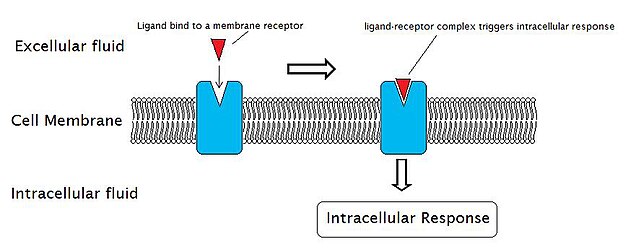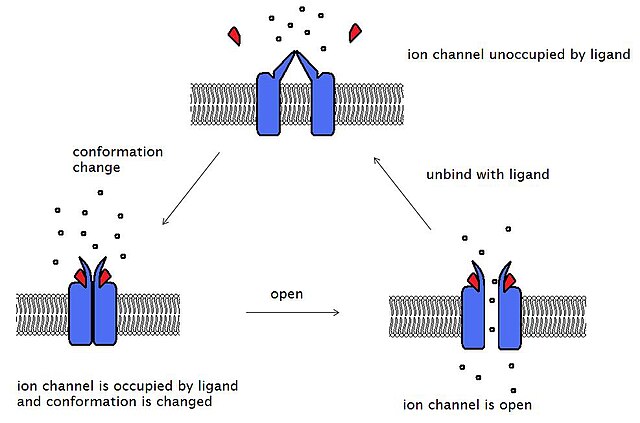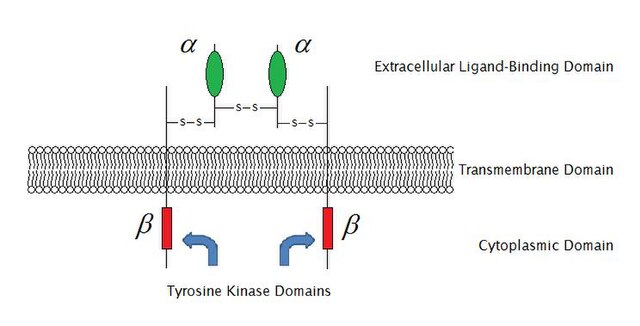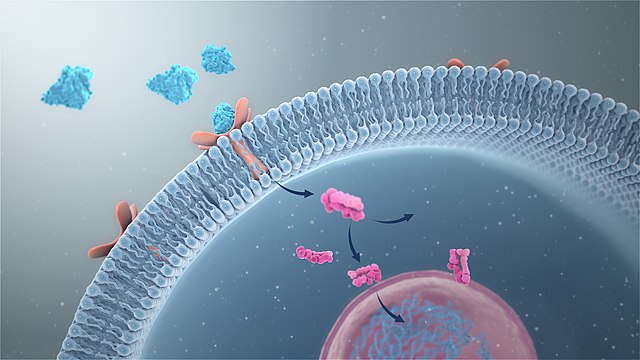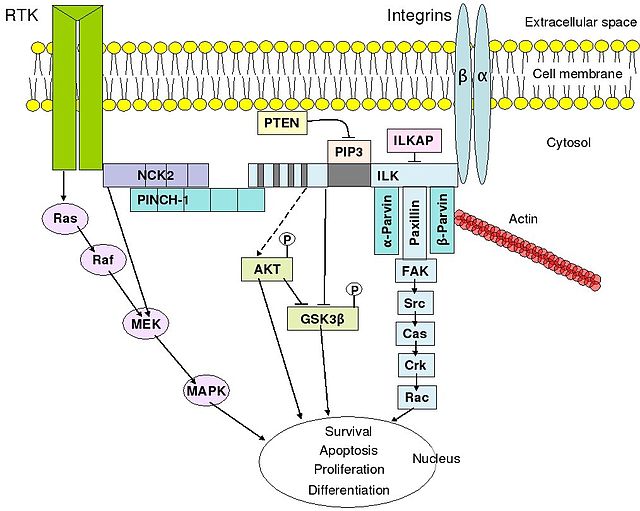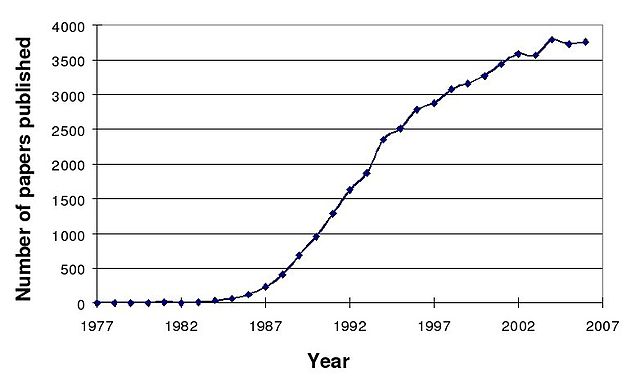Cell surface receptors are receptors that are embedded in the plasma membrane of cells. They act in cell signaling by receiving extracellular molecules. They are specialized integral membrane proteins that allow communication between the cell and the extracellular space. The extracellular molecules may be hormones, neurotransmitters, cytokines, growth factors, cell adhesion molecules, or nutrients; they react with the receptor to induce changes in the metabolism and activity of a cell. In the process of signal transduction, ligand binding affects a cascading chemical change through the cell membrane.
External reactions and internal reactions for signal transduction (click to enlarge)
Three conformation states of acetylcholine receptor (click to enlarge)
Sketch of an enzyme-linked receptor structure (structure of IGF-1R) (click to enlarge)
Flow charts of two strategies of structure-based drug design
Signal transduction is the process by which a chemical or physical signal is transmitted through a cell as a series of molecular events. Most commonly, protein phosphorylation is catalyzed by protein kinases, ultimately resulting in a cellular response. Proteins responsible for detecting stimuli are generally termed receptors, although in some cases the term sensor is used. The changes elicited by ligand binding in a receptor give rise to a biochemical cascade, which is a chain of biochemical events known as a signaling pathway.
3D Medical animation still showing signal transduction.
An overview of integrin-mediated signal transduction, adapted from Hehlgens et al. (2007).
Occurrence of the term "signal transduction" in MEDLINE-indexed papers since 1977

